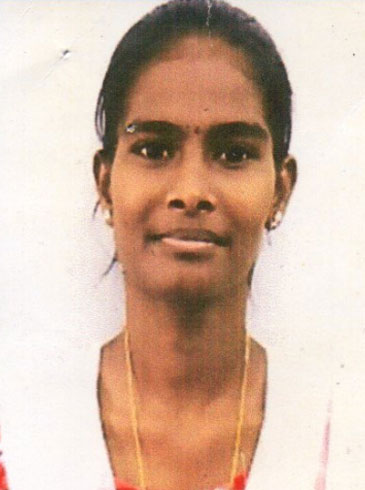Head Injury: A case report
Saranya1,*, Malika Devi2,Vanitha3
1Staff Nurse, Kauvery Hospital, Tirunelveli, India
2Staff Nurse, Kauvery Hospital, Tirunelveli, India
3Patient Care Assistant, Kauvery Hospital, Tirunelveli, India
*Correspondence: +91 9585996277; nursing.nellai@kauveryhospital.com
Background
A head injury is any trauma to the scalp, skull or brain. Head injury can either be open or closed. Head injuries include skull fractures, scalp wounds and concussion and it may cause bleeding in the brain tissue or in the layers that surround the brain. Head injury is a very common reason for an emergency visit. Traumatic brain injury (TBI) accounts for over 1 in 6 injury-related admissions each year. The CDC approximates that around 52,000 people die every year due to severe TBI (STBI). Nurses are the health care professionals who see the full impact of TBI and have the skill that can alter the course of a patient’s recovery. Nurses requires knowledge and skills to provide quality care to the adults with STBI. Nurses play a vital role in the management of patients with STBI. Let us discuss about the nursing management of a patient admitted with Head injury in this article.
Case Presentation
47 வயதுடைய ஒரு ஆண் அவர்கள் சாலை விபத்து (Road Traffic Accident, Self-Fall) காரணமாக திருநெல்வேலி காவேரி மருத்தவமனையில் உள்நோயாளியாக அனுமதிக்கப்பட்டார். அவரது கவனக் குறைவால் ஏற்பட்ட சாலை விபத்தில் அவருக்கு மூளையில் இரத்தக் கசிவு ஏற்பட்டு சுயநினைவு இழந்து, கை, கால்கள் செயலிழந்த நிலையில் மருத்தவமனையில் அனுமதிக்கப்பட்டார். அவரை குணபடுத்த மருத்துவர்கள் மற்றும் செவிலியர்கள் குழந்தையை கவனிப்பது போல் கவனித்துக் கொண்டனர்.
அவர் சுய நினைவை இழந்ததால் தானாக அவரால் மூச்சு விட முடியாத காரணத்தினால் அவருக்கு செயற்கை சுவாசக் கருவி (Mechanical Ventilator) பொருத்தினோம். அவரால் விழுங்க இயலாத மற்றும் (Swallowing reflex) எனும் அனிச்சை செயல்திறன் இல்லாத காரணத்தினாலும் மூக்கின் வழியே வயிற்றுக்கு குழாய்; (Nasogastric Tube) ஒன்று பொருத்தினோம் மற்றும் சிறுநீர் வெளியேற்ற குழாய் (Catheterization) பொருத்தினோம்.
அவர், மிகவும் மோசமான நிலையில் இருப்பதால் மற்றும் கை, கால்கள் செயலிழந்து இருப்பதால், அவருக்கு தேவையான அனைத்து விதமான பராமரிப்புகள், பின்புற மற்றும் முதுகுப்புற பராமரிப்பு (Back care) படுக்கைப் புண் (Pressure sore) வராமல் தடுப்பதற்காக இரண்டு மணி நேரத்திற்க்கு ஒரு முறை வலது மற்றும் இடது புறமாக நிலை மாற்றி படுக்கை வைத்தல் (Frequent or 2nd hourly position changing), உடல் பராமரிப்பு (Body care), வாய் பராமரிப்பு (Mouth Care) மற்றும் சிறுநீர் குழாய் பராமரிப்பு (Catheterization Care) ஆகிய அனைத்து பராமரிப்புகளையும் மருத்துவர்கள் மற்றும் செவிலியர்கள் ஆகிய நாங்கள் செய்து வந்தோம்.
அவர்களுக்கு தொடர் செயற்கை சுவாசம் அளிப்பதால், ஒரு வாரம் கழித்து அவருக்கு செயற்கை குழாய் பொருத்தும் அறுவை சிகிச்சை (Tracheostomy Procedure) செய்யப்பட்டது. மேலும், அவருக்கு அறுவை சிகிச்சை செய்த முன் கழுத்துப் பகுதியில் நோய்த் தொற்று ஏற்படாமல் இருப்பதற்காக தினமும் அடிக்கடி சுத்தம் செய்து வந்தோம். செவிலியர்களாகிய நாங்கள் (Empathetic Care) ஆகிய பிறர்நிலை உணர்ந்து கவனித்தல் எனும் பணியை செய்து வந்தோம். பின்பு, 20 இருபது நாட்கள் கழித்து அவருடைய உடல் நலத்தில் நல்ல முன்னேற்றம் ஏற்பட்டதை கண்டு மகிழ்ச்சி அடைந்தோம்.
அதற்குப்பின், தானாக கண் விழித்து பார்த்தார். கை, கால்களை மெல்ல மெல்ல அசைக்க தொடங்கினார். மேலும், அவர் ஆக்ஸிஜன் உதவியின்றி தானாக அவரே (Room Air) மூச்சு விட ஆரம்பித்ததால், செயற்கை சுவாசத்தை நிறுத்தி விட்டோம். பின், அவர் இறுதியில், வாய் வழியாக உணவு சாப்பிடும் அளவிற்கு அவரது உடலில் நல்ல முன்னேற்றம் ஏற்பட்டது.
மேலும், அவரது உடல்நிலையை நன்கு முன்னேற்ற தேவையான உடற்பயிற்ச்சிகளை (Physiotherapy) அவ்வப்போது வழங்கினோம். பின், ஒரு மாத காலத்திற்கு பிறகு, அவரது உடல்நிலை சரியான காரணத்தினால், அவரை அவரது குடும்பத்தார் வீட்டிற்கு அழைத்து செல்ல முடிவு செய்தனர். அதற்கான ஏற்பாடுகள் செய்து அவரை வீட்டிற்கு அனுப்பி வைத்தோம். இதனால், செவிலியர் ஆகிய நாங்கள் பட்ட கஷ்டங்கள் யாவையும் மறந்து மிக்க மகிழ்ச்சி அடைந்தோம்.
Conclusion:
Traumatic Brain Injury is a major cause of death and disability throughout the world. The management of severe traumatic brain injury includes different approaches, which clearly requires the efforts of bedside nurses along with the other healthcare team in the hospital. While such management can be challenging, nurses should have enough knowledge and skill to provide quality care and to be competent in the healthcare sector.
References
- Chinnery, et al. Traumatic brain injury advances since 2017: what has changed? The Lancet Neurology, 2022.
- Burton, et al. Geoffrey Manley: TBI guy. Lancet Neurol. 2022.
- Maas, et al. Traumatic brain injury: progress and challenges in prevention, clinical care, and research. Lancet Neurol. 2022.

Saranya,
Staff Nurse

Malika Devi,
Staff Nurse

Vanitha,
Patient Care Assistant
